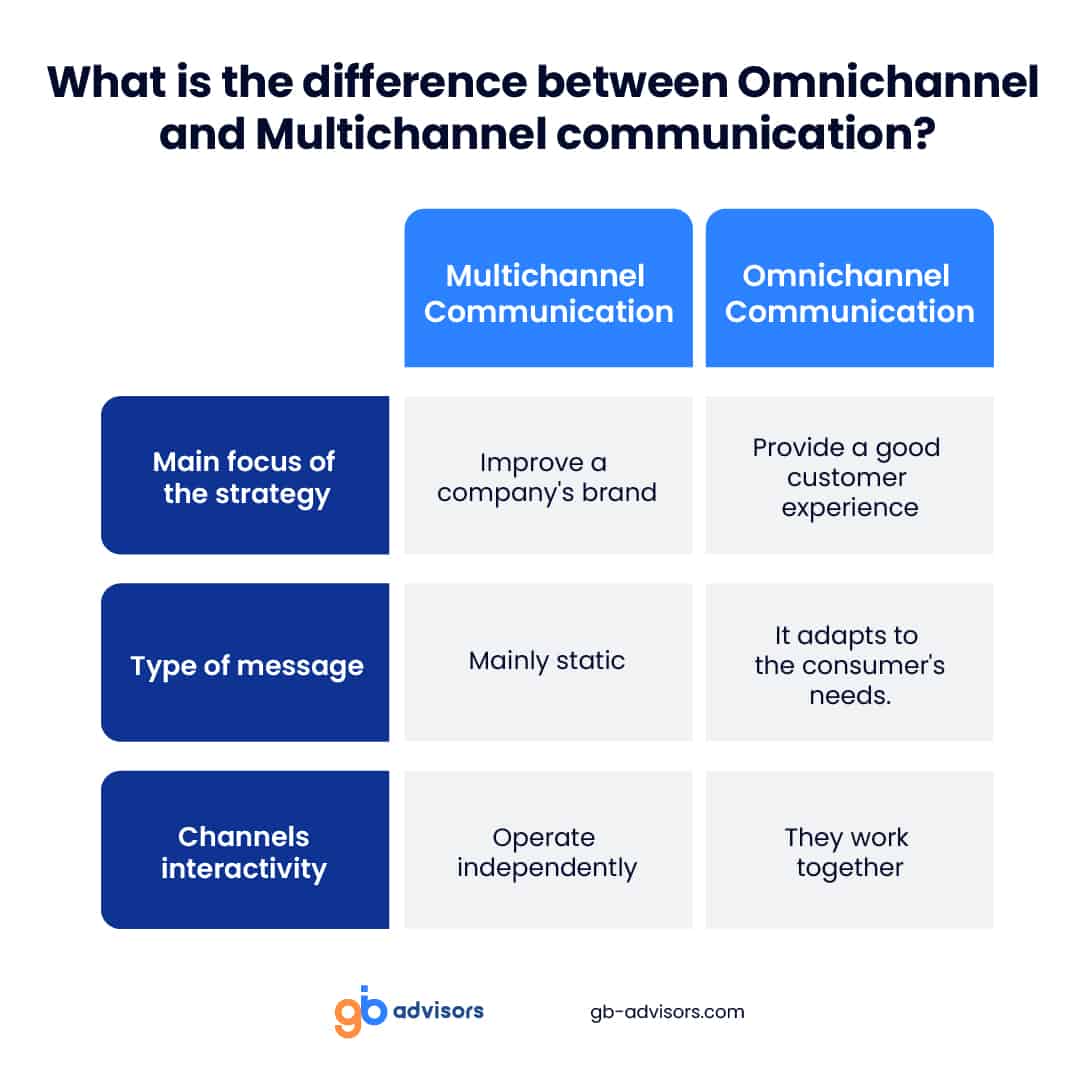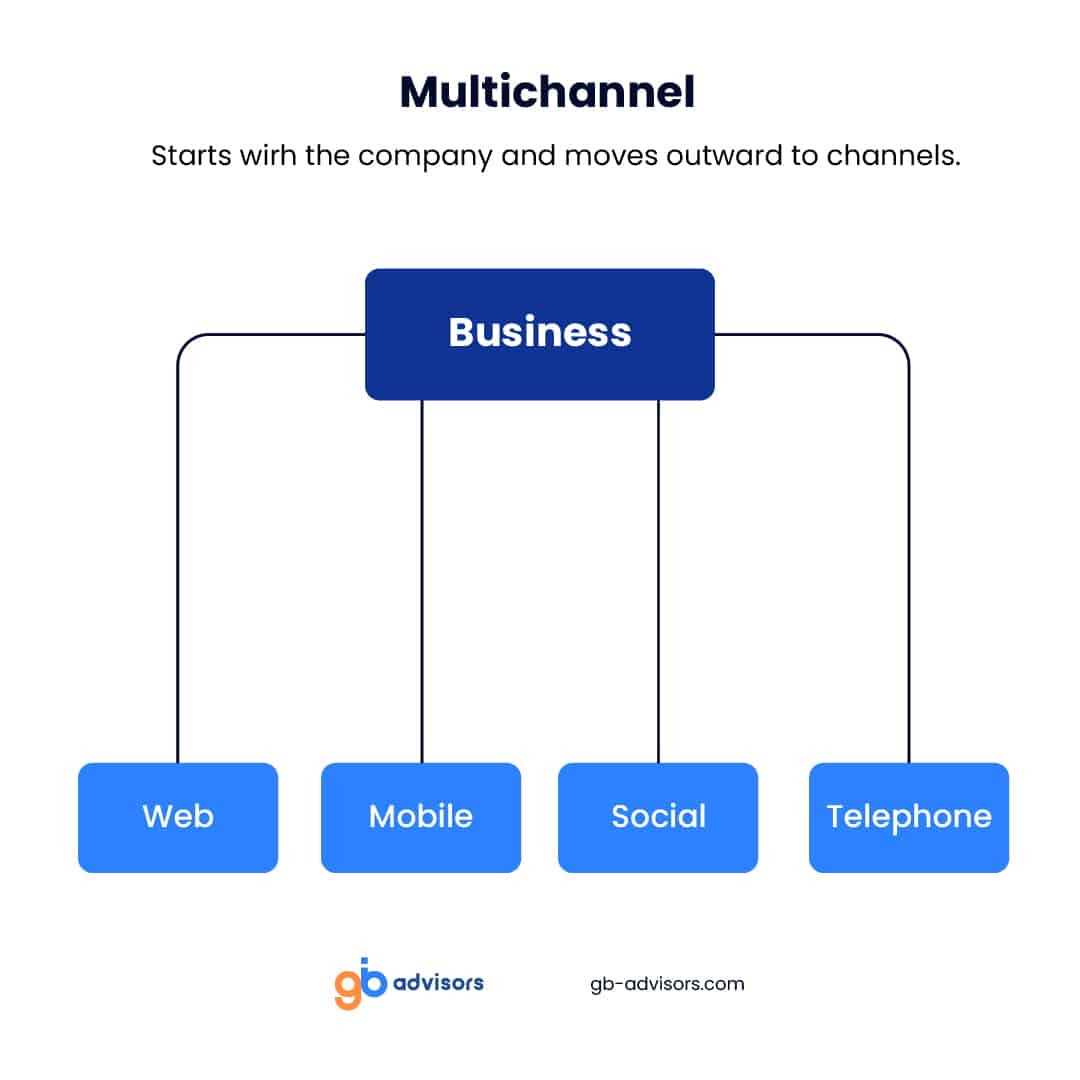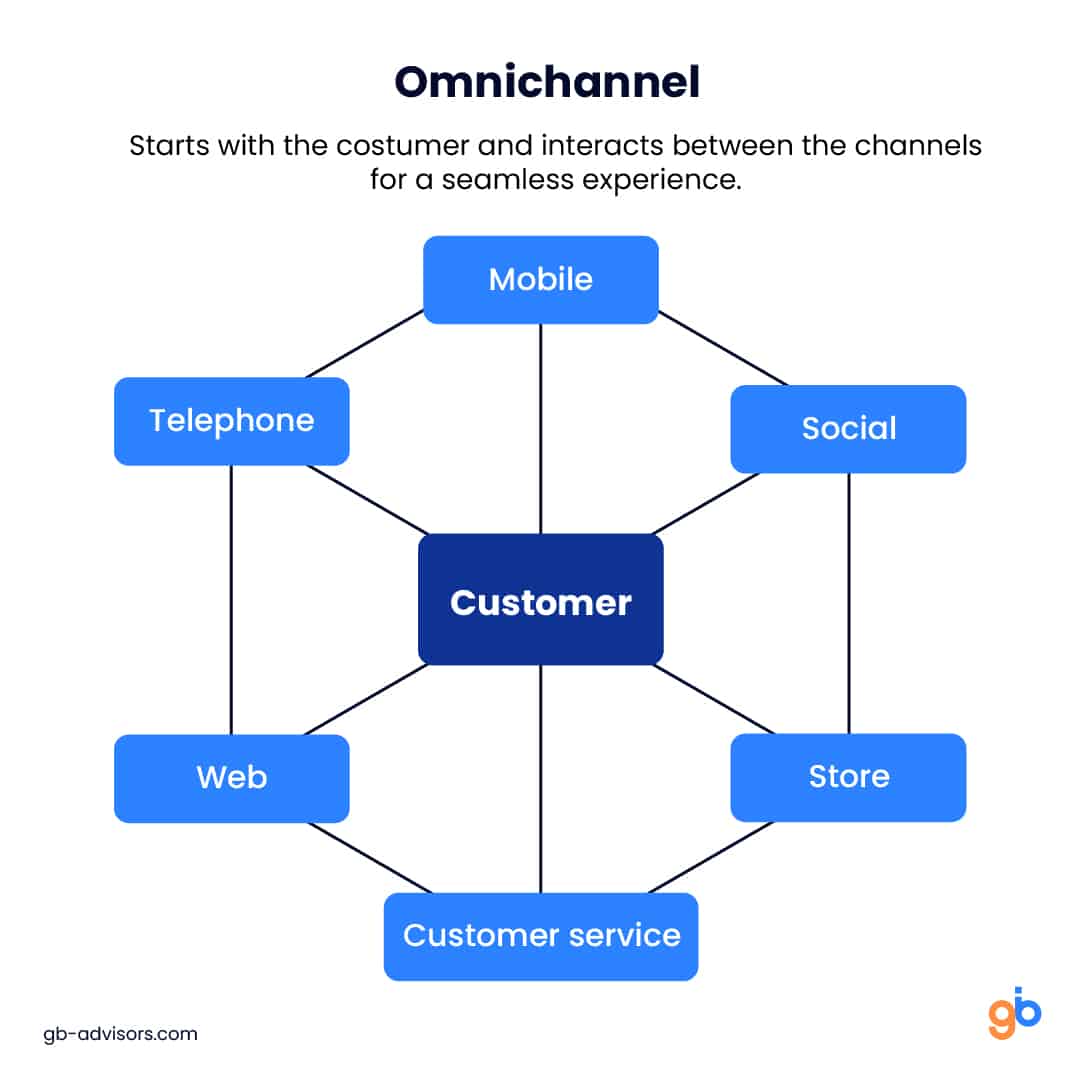The world of customer service is evolving, and with it comes two different approaches that many companies must use to communicate: Multichannel vs. Omnichannel.
If there’s one thing customers have in common today, it’s that they want to interact across multiple platforms. That’s why companies must understand the subtle, but important difference between these communication strategies.
In this blog post, we will discuss the characteristics of multichannel and omnichannel communication. In addition, we will help you select the one that best fits your business model so that you can meet your customers’ expectations.
What is multichannel communication?
Business communication has come a long way since the days when the only channels available were mail and phone calls. With multichannel communication, organizations can now use more than one platform to interact with consumers, including chats, social media, email, and messaging apps, among others.
However, these channels do not need to be integrated. For example, the content a company shares on Facebook may be completely different from the content it uses in an email marketing campaign.
This puts the product or service at the center of the strategy, and the communication channels are responsible for conveying that message individually. So consumers must go to a specific channel to find the information they want.
What is omnichannel communication?
Like multichannel communication, this strategy also involves multiple communication channels. However, in an omnichannel strategy, all platforms are integrated to offer the customer a unified experience.
Omnichannel communication works simply: any interaction the customer has via phone, social media, email, or chat must be aligned with the same message.
This allows companies to create a more consistent experience since users can move seamlessly between different channels to get the information they are looking for.
In fact, in a study conducted by Coresight, 72% of retail stores have already started to implement or are using this communication model. While the rest of the companies are considering implementing it.
Omnichannel vs. Multichannel communication: What is the difference?
The main difference between these strategies is the approach to information. While an Omnichannel strategy makes use of all available channels to provide a unified experience to users, a Multichannel strategy uses these channels to promote a product or service.

In the table above, we can see that an Omnichannel strategy puts the consumer first and focuses on their needs. In this way, it can offer them personalized communication, while ensuring a good experience.
A good example of this approach is the strategy implemented by Amazon. This company uses its channels to get to know consumers better and offer them an experience that is both personalized and relevant across all touchpoints.
The unity of channels is precisely what differentiates an omnichannel and multichannel strategy, since, in the latter, channels operate independently. So social media, email, and chat can each be used to convey a different message.
Apple makes good use of this strategy. Although this company operates both physical and online stores, its branches are designed to complement the online strategy. In this way, its physical stores operate as independent points of contact with the customer, strengthening the overall brand experience.
Therefore, although omnichannel and multichannel communication may appear similar on the surface, each has major differences that affect how consumers perceive a company. In summary, we can say that the goal of an omnichannel strategy is consistency in information, while a multichannel is flexibility.
Omnichannel vs. Multichannel Communication: Which is best for your company?
At first glance, many companies think that selecting an omnichannel strategy and focusing on the customer experience is the best option.
However, the reality is that it is not that simple. As companies of all sizes and industries have achieved success by applying both strategies. So the idea is to select the communication that best suits your company’s needs.
Here are some tips that will help you make the best decision:
When to select a multichannel strategy?
A multichannel strategy is ideal if your company has limited resources or cannot invest to implement omnichannel communication.
Multichannel communication’s main advantage is its flexibility by allowing each channel to work separately. This allows stakeholders to put communication aside, and focus on developing each channel.

However, this does not mean that implementing multichannel communication is cheap. To implement this strategy, companies still require a technology infrastructure to help them scale their operations. Similarly, automation software plays a crucial role in managing growth without sacrificing quality.
When to select an omnichannel strategy?
Implementing an omnichannel strategy can be a powerful growth driver for all companies. Since, by connecting with consumers through multiple touchpoints, organizations deliver a more consistent brand experience at every interaction.
This is especially true for e-commerce companies. In this field, omnichannel communication is key to engaging new customers and building loyalty with existing ones. With a coordinated and compelling set of communication channels, companies have a greater opportunity to rise above the noise and stand out from the crowd.

While it is true that omnichannel communication may require more resources in terms of investment and maintenance, the benefits of this strategy are worth it. It can help you improve your customer’s experience, increase retention rates and even increase sales.
Omnichannel vs. Multichannel communication: Conclusions
Despite their similarities, omnichannel and multichannel communication have major differences that influence communication and relationship with customers.
A multichannel strategy is ideal for companies that want to expand their e-commerce reach. While omnichannel communication allows you to polish it.
However, to implement these strategies correctly, companies must have an intelligent communication platform. In this way, they will be able to seamlessly manage multiple customer service channels and provide good service to their customers.
If you want to learn more about this tool or want to improve your company’s communication, contact us, and we will be happy to assist you.



